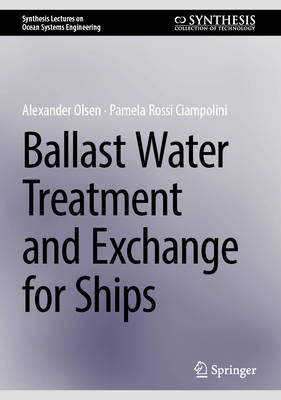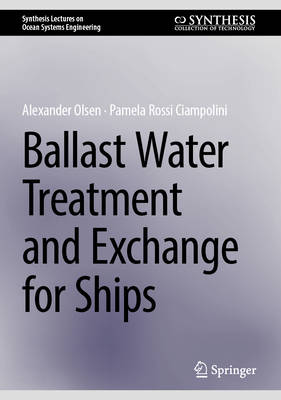
- Retrait gratuit dans votre magasin Club
- 7.000.000 titres dans notre catalogue
- Payer en toute sécurité
- Toujours un magasin près de chez vous
- Retrait gratuit dans votre magasin Club
- 7.000.0000 titres dans notre catalogue
- Payer en toute sécurité
- Toujours un magasin près de chez vous
Description
The inadvertent transfer of harmful aquatic organisms and pathogens in the ballast water of ships has been determined to have caused a significant adverse impact to many of the world's coastal regions. The international maritime community, under the auspices of the IMO has developed several documents, including the "International Conventions for the Control and Management of Ship's Ballast Water and Sediments, 2004", (Ballast Water Management Convention), which are aimed at preventing the introduction of unwanted aquatic organisms and pathogens through the discharge of ballast water and sediments. The Ballast Water Management Convention applies to vessels registered in a country which is party to the Convention and to those vessels registered in other countries when operating in the waters of a country which is party to the Convention. As a means to prevent, minimize and ultimately eliminate the risk to the environment, human health, property and resources arising from the transferof harmful aquatic organisms and pathogens through the control and management of vessel's ballast water and sediment, as well as to avoid unwanted side-effects from that control, the Convention requires vessels to conduct a ballast water exchange or be fitted with an approved ballast water management system. It is noted that several studies have shown that the effectiveness of ballast water exchange varies and is dependent on the vessel type (design), exchange method (sequential, flow-through and dilution methods), ballasting system configuration, exchange location, weather conditions and vessel's trading pattern. For these reasons (and others), it has been determined that ballast water exchange does not provide adequate protective measures to prevent damage from organisms and pathogens carried in a vessel's ballast, even though exchange was considered to be acceptable as an interim solution.
This book includes updates for the clarification of Survey requirements and adds the definition of biological commissioning, testing as well as requirements for Class approved Service Providers to conduct biological commissioning testing. Moreover, this book includes updates due to the adoption of the requirements from IACS UR M74, Rev. 2 and UR F45 and is applicable for existing ships, where an application for approval for the plans of BWMS is made on or after 1 July 2022; or for new ships contracted for construction on or after 1 July 2022.
Spécifications
Parties prenantes
- Auteur(s) :
- Editeur:
Contenu
- Nombre de pages :
- 202
- Langue:
- Anglais
- Collection :
Caractéristiques
- EAN:
- 9783031562440
- Date de parution :
- 15-05-24
- Format:
- Livre relié
- Format numérique:
- Genaaid
- Dimensions :
- 175 mm x 249 mm
- Poids :
- 544 g

Les avis
Nous publions uniquement les avis qui respectent les conditions requises. Consultez nos conditions pour les avis.






